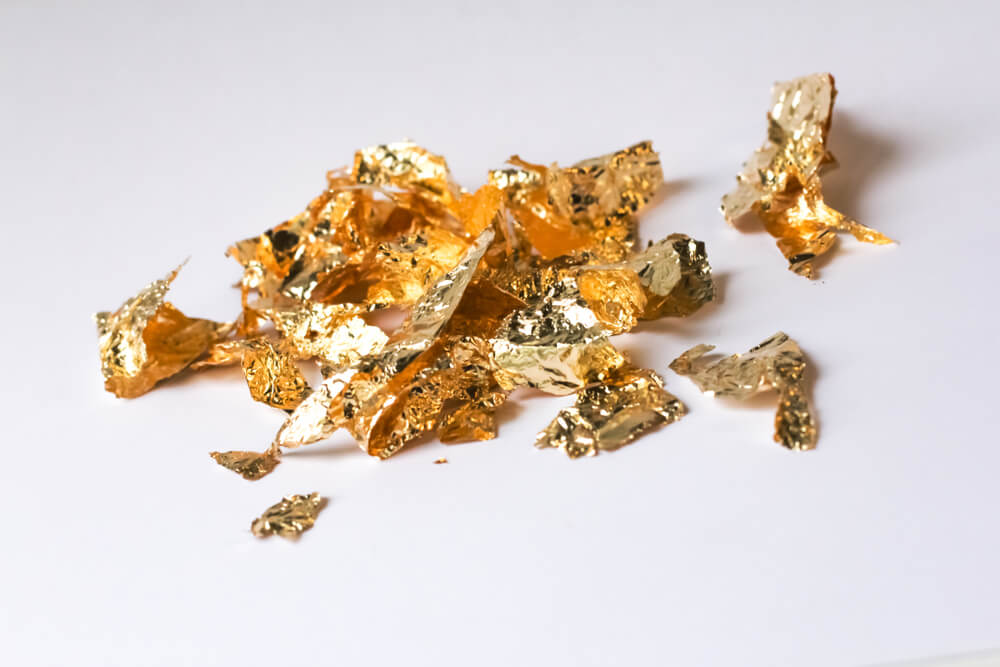
What is Paper Gold? Physical Gold vs. Paper Gold
When most people think of gold, a yellow metal that shines and can be taken physical possession of comes to mind. When gold “investors” think about the precious metal, a non-tangible variant, aka “paper gold”, also comes to thought.
Although digital gold is not the real deal, it’s equivalent to physical gold if looked at purely from an investment perspective. If gold is something you wear, digital or paper gold is not an alternative to the physical product.

Physical and paper gold have merits and drawbacks. In this article, we’ll glaze over them all in detail so that you make wise investment decisions. Here are the things we’ll cover:
- Brief introduction to paper gold
- Buying paper gold
- Basic overview of physical gold and buying gold
- Comparing the two forms of gold and much more
In a world where cryptocurrency and digital money are becoming the norm, zero knowledge about paper gold or how it compares to physical gold is simply not knowing better. Read on to get educated.
Table of Contents
Paper Gold: What Is It?
As the name suggests, paper gold is a paper or document representing a gold investment. Gold stocks, gold ETFs (exchange-traded funds), gold futures, etc., are paper/digital gold examples.
Gold ETFs usually hold physical gold. On the other hand, a gold mutual fund is invested in the units of a gold ETF. Kindly note, paper-based gold is “representative”. It doesn’t afford actual gold ownership.
The amount of gold pegged to each fund unit would vary based on the fund issuer and the type of fund. Each share of SPDR Gold Shares, for instance, holds 1/10th of a gold ounce. Another gold fund or ETF could have a lesser or greater unit of gold attached to each share.
Also, not all gold funds provide investors with direct gold price exposure. Some could also be invested in publicly traded gold production, mining, or refining companies. Often, it’s a combination of the two so that the fund benefits from the dynamics of both worlds. The value of paper gold fluctuates a lot more or falls and rises quicker than actual gold’s price itself. That’s because the gold companies that these funds are invested in are subject to political or environmental factors not directly related to actual gold prices or the gold market.
Read more: Is Gold Mineral or Metal?
How to Buy Paper Gold? And Things to Consider

As mentioned above, there are different forms of digital gold. To invest in them, the means or process could vary. Like shares and other precious metals ETFs, gold ETFs trade on a stock market. On the other hand, gold mutual funds are purchased from the issuing fund house.
Expense Ratio
To maintain the fund or to cover the administrative costs and management expenses of the ETF, an annual fee is charged, referred to as the expense ratio. It’s denoted as a small percentage of your investment and is used for covering the gold ETF’s expenses.
Generally, an expense ratio of 0.5 to 0.75% is considered healthy. Therefore, when on the lookout for investing in a gold ETF, ensure that the exchange-traded product’s expense ratio falls within the prescribed range. Anything near or above 1.5% is expensive.
The iShares Gold Strategy ETF by iShares Gold Trust, for instance, has an expense ratio of 0.37%, which comes out to be $37 per year on a $10,000 investment. It is among the most inexpensive gold ETFs out there.
Trader Commission
Investors must also pay commissions to trade gold ETFs. The charges are usually single-digit dollar amounts. But if you buy and sell ETFs frequently, the commissions could add up quickly. And if the trade is “broker-assisted” (executed with the able guidance of the agent), carried out through automated phone orders, etc., the charges would be more significant.
What is Physical Gold? And How to Buy Physical Gold?
Physical gold is real gold in coins, bars, jewelry, etc. It offers you direct gold exposure. Physical gold is called bullion in its bulk form, usually minted into gold coins or cast into gold bars. The bullion articles are investment quality gold bars or coins or are valued based on their fine gold content and mass and not their monetary face value.
You can procure such physical pieces of gold from government mints (such as the Royal Canadian Mint or Perth Mint), private mints, jewelers, and precious metal dealers. Although gold has a fixed value, the prices across dealers and jewelers could vary. Therefore, do some research to bag gold for the right price.
Physical and Paper Gold: A Comparison
To learn more about how physical and paper gold stack up, let’s list down their positive attributes.
- No storage fees: With paper gold, physical space, or a third-party custodian to store your gold assets is not required. Also, there are no processing and delivery fees and other administration-related costs (usually linked to physical gold). Although you may bypass storage costs by using your facility, that route isn’t recommended since it could be risky and is also frowned upon by the IRS.
(Talking about costs, investing in digital gold brings to fore its own set of brokerage fees and other charges, as discussed above. Investing in paper gold is, therefore, not without its expenses. But those expenditures are usually lesser than the costs associated with physical gold’s purchase, warehousing, and insurance.)
- No physical damage risk: Digital gold is essentially a piece of document. Since it can be reproduced, it cannot be permanently tarnished or made non-existent, unlike gold that could be stolen, burned, melted, etc.
- No transportation costs: Again, buying or investing in paper gold doesn’t entail transportation or other expenses, unlike physical gold.
- Increased liquidity: Physical gold has always had its buyers, but finding a readily available buyer can take time. Even if you find a potential buyer, the transaction will take time to hit completion. With paper gold, however, things are much quicker and easier. To sell or buy paper gold, all that’s required is a mouse button click or phone call to your broker.
- No barrier to entry: Paper gold lets you buy gold in small chunks or 1/10th of an ounce, making it accessible to a broader set of investors with varying buying capabilities. The smallest form of physical gold is usually a quarter ounce (7 grams) that may not be within the financial reach of a lot of people.
- Zero purity concerns: Paper gold offers an authenticity guarantee. For instance, gold ETFs usually hold a 99.5% equivalent quantity of gold bullion. With physical gold, you must make sure the gold is pure gold, even when dealing with a reputable dealer.
Paper gold may have made investing in gold a lot more convenient, but the charm attached to buying or owning physical gold is not going anywhere anytime soon. The following are the benefits of purchasing the tangible asset:
- Actual gold ownership: Buying physical gold means owning the metal. Paper gold represents the value of gold, but it is not solid gold or offers no actual gold exposure. Also, you cannot convert or swap your paper gold stakes for real gold even if the fund or ETF is backed by solid gold. However, you can sell the document and use those proceeds to buy gold bars, coins, etc.
- Inherently valuable: Physical gold has intrinsic value. It doesn’t represent or assume value by clinging to the value of another commodity the way paper gold does. When gold prices go up, the value of physical gold increases too. However, the same correlating behavior is not a given with paper gold. In fact, it’s not uncommon to see a skyrocketing spot price of gold having no positive impact on a gold ETF’s value.
- No counterparty risk: Gold bullion presents no counterparty risk—the likelihood of another party in the arrangement defaulting on the contract’s obligations. Therefore, gold ETFs and other forms of paper gold can never be a perfect substitute for physical gold.
- Natural inflation hedge: Most people add gold to their investment portfolio so that the metal would act as their safeguard when fiat currency loses its value. Physical gold provides that inflation protection. But paper gold doesn’t, as it’s intertwined with a financial institution that isn’t immune to economic idiosyncrasies.
- Increasingly accessible: Although the starting price points could be a hurdle, physical gold is much easier to procure when you have the means. It is devoid of the red tape identified with paper gold transactions. You need not open a trading account, register with a brokerage, etc. Just walk into a jewelry or precious metals dealership and buy gold instantly.
- Wearer pleasure: The investment side of the discussion aside, you can wear physical gold. Gold jewelry is the first thing that comes to mind when thinking of wearable gold. But you can also wear gold coins or bars.
Read more: Best gold IRA companies
Conclusion
Both physical and paper gold are bonafide ways to invest in gold. However, the two have unique attributes. Physical gold, as mentioned above, actually lets you buy gold. Paper gold doesn’t afford that ownership but is a capable investment vehicle nonetheless.
Both forms of gold have pros and cons, and choosing to side with one over the other is a matter of personal choice and specific investment goals. If you’re looking to buy physical gold, steer clear of jewelry since it cannot be construed as an “investment”. If, however, you like to flaunt gold, we recommend jewelry.
If you’d like to buy physical gold but don’t want to deal with the hassles attached to owning the metal, look to a gold IRA. If you don’t know what a gold IRA is, browse through the articles we’ve previously written. To get started, click here.


